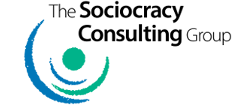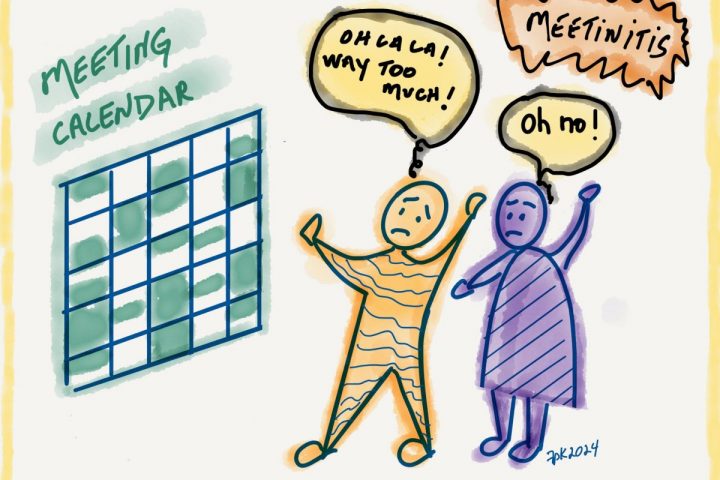 This Inc.com article on leaders as strategic thinkers, by Paul J. H. Schoemaker, offers a framework for illustrating how to build strategic leadership into self-managing organizations. The article suggests six habits of “Adaptive strategic leaders – the kind who thrive in today’s uncertain environment.” It describes how those habits support a successful organization.
This Inc.com article on leaders as strategic thinkers, by Paul J. H. Schoemaker, offers a framework for illustrating how to build strategic leadership into self-managing organizations. The article suggests six habits of “Adaptive strategic leaders – the kind who thrive in today’s uncertain environment.” It describes how those habits support a successful organization.
Schoemaker presents these habits as those of an individual. This is our common cultural bias – an idea of individual “heroic” leaders. Let’s look beyond this bias, and examine how entire organizations are able to practice these habits of adaptive strategic leadership.
In self-managing organizations, leadership gets distributed throughout the organization. Why is this a benefit? Because with only one or a few individuals designated as “leaders,” the organization loses, misses, wastes the leadership abilities of everyone else. When we enable everyone’s leadership potential to emerge, we get higher quality strategic leadership.
How distribution of leadership happens depends on the particular implementaton of self-managment. Here we are looking at applications of the Sociocratic Circle-organization Method (SCM), which provides practical means for systemic implementation of sociocracy in organizational structures and decision-making processes. The SCM is a meta-design system for self-leading, self-managing organizations. It offers robust structure and process to distribute – and cultivate – leadership.
The first habit Schoemaker identifies is “Anticipate,” and he lists three actions to support anticipation. An SCM approach builds these actions into the organization itself. “Peripheral vision,” as he describes it, exists throughout the organization. External experts are part of the organization’s long-term high-level leadership team. They connect the organization with its environment, providing information, input, and feedback. Rather than relying on one or a few individual leaders, every member of the organization contributes to a habit of anticipation.
Schoemaker’s second habit is “Think critically.” We can do better than relying on one or a few individual “leaders” for all the critical thinking. An SCM-based organization encourages everyone towards thinking critically. Questioning entrenched ideas and re-framing problems – and solutions – is intrinsic to the SCM’s consent-based decision making processes. A foundational value of transparency supports avoiding hypocrisy and manipulation. Objections to proposed decisions are a valued asset – they are feedback that may lead to better solutions.
“Interpret” is the article’s third habit. Schoemaker writes that “A good strategic leader holds steady, synthesizing information from many sources before developing a viewpoint.” This is exactly what a self-managing team, group, department, or entire organization does. Everyone whose work is affected engages with the issues at hand. This brings valuable diversity of input towards common goals. The synthesized viewpoint is gathered from multiple standpoints.
Schoemaker raises issues of “analysis paralysis” in the fourth habit – “Decide.” In the SCM approach, self-managing groups work with available information and make “good enough” decisions for next action steps. They include measurement (feedback) and evaluation in each step. Iterative processes move towards what’s next without waiting “forever” for what’s needed now. “Perfection” is a journey rather than an end-point. Instead of imposing all this work on one or a few individuals, the SCM approach uses consent-based decision-making and transparency to leverage the abilities of all involved.
The fifth habit offered in the article is “Align.” Here SCM-based organizations again step out of the box of “heroic” leadership. A leadership meeting works to fulfill Schoemaker’s three key points relative to “alignment.” There is no assumption that “total consensus is rare.” Instead, the SCM applies a rigorous and efficient design process to achieve consent from those whose work the decision affects. A key contributor to this outcome is collective awareness of – and consent to – common aims that guide design – and re-design – of decisions.
Schoemaker’s sixth and final habit is “Learn.” To avoid feedback becoming less likely as a company expands, an SCM-based organization builds in circular feedback from the start. These feedback mechanisms scale automatically as an organization grows. This creates, by design, learning organizations. All feedback has value, and “failures” are simply one form of learning opportunity. Decisions and actions have feedback designed into them. The rate of feedback adjusts to suit current or anticipated needs.
This is how a well-designed organization lives these six habits of “adaptive strategic leaders.” The habits are built in, rather than depending on one or a few “heroic” leaders. All members of an organization contribute to distributed, organized, and effective leadership.



